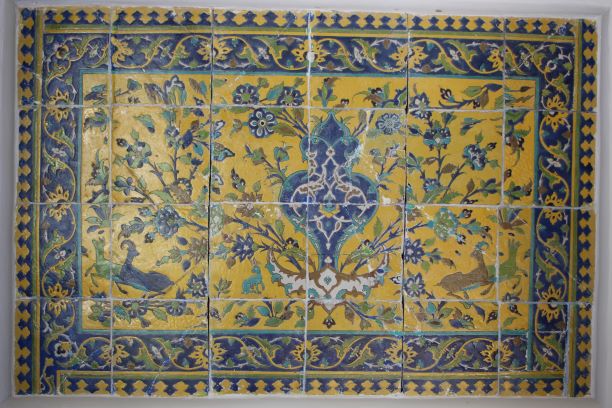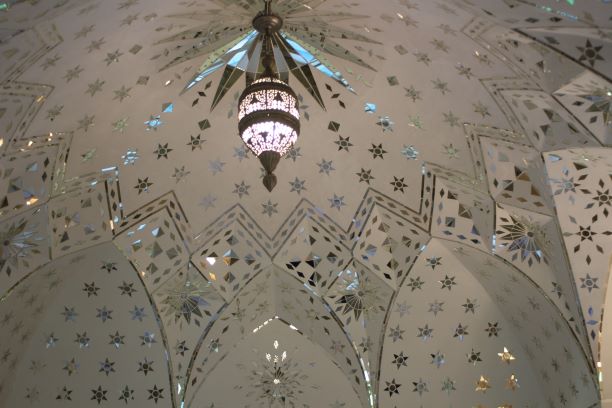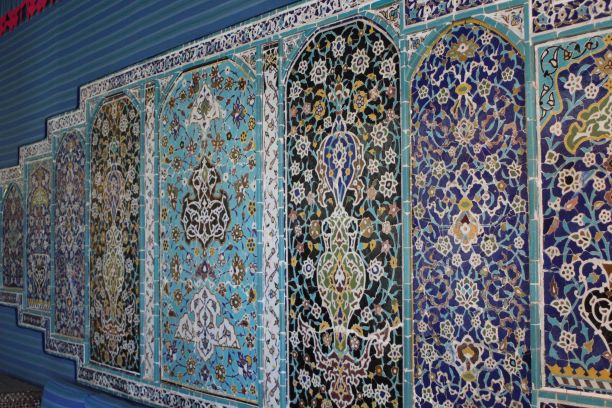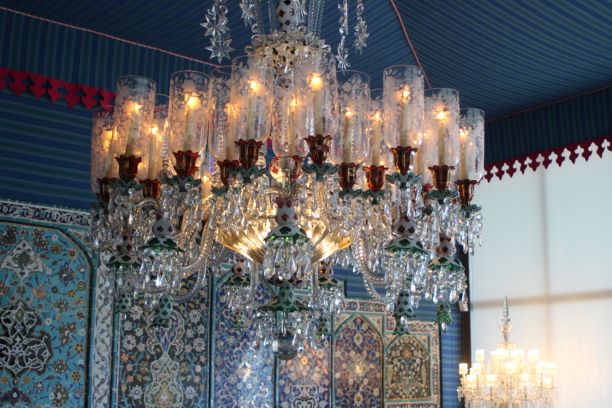
In 1935, a newly married Doris Duke was on her around the world honeymoon with her husband James Cromwell. During a stopover, she was captivated by the beauty of Honolulu and Waikiki.

She bought a piece of oceanfront property near Diamond Head and began close supervision of the construction of her home, Shangri-La.

Ms. Duke was also an avid art collector and purchased many masterful works of art from all over the Middle East, including Syria, Morocco, Egypt, Lebanon, Turkey, Iran and Iraq. These Islamic art pieces became the centerpieces of the home.

In 1998, five years after her death, the Doris Duke Foundation for Islamic Art was established. Today, you can take a tour of Shangri-La through the Honolulu Museum of Art. Note that spots are limited and tours sell out fast. In addition, Shangri-La is closed for two months in the fall for maintenance.

Shangri-La is an incredible space with each room magnificently decorated. The tour progresses through each room where we were awed by the artwork.

Of course, today accumulating a collection like this would be impossible due to international laws regulating removing artwork from native countries. These laws have been enacted to prevent the pilfering of national treasures, a practice that has been happening at least since Roman times. Imperial states have used the excuse that taking artifacts protected them from plunder by thieves (irony, much?) Regardless of your political stance on these artifacts, viewing a collection of this importance would be impossible except in a handful of places worldwide.
About the Author

Brent Petersen is the Editor-in-Chief of Destination Eat Drink. He currently resides in Setubal, Portugal. Brent has written the novel “Truffle Hunt” (Eckhartz Press) and the short story collection “That Bird.” He’s also written dozens of foodie travel guides to cities around the world on Destination Eat Drink, including and in-depth eating and drinking guide to Portugal. Brent’s podcast, also called Destination Eat Drink, is available on all major podcasting platforms and is distributed by the Radio Misfits Podcast Network.
